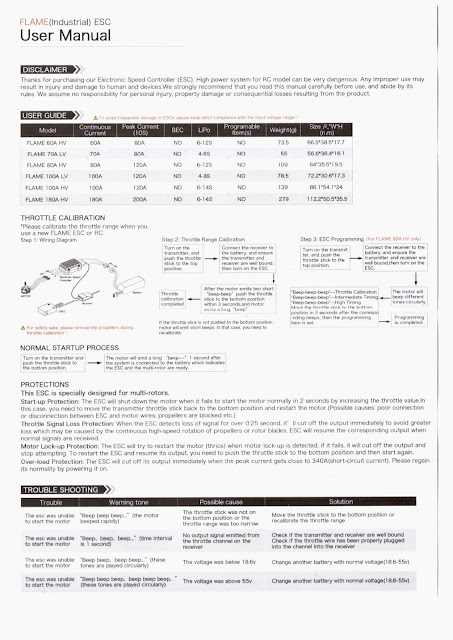Another in the series of 'If I can do it, anyone Nobel prize-winning physicist can'.
So with a new year upon us, it's time to go large or go home. Our first objective is to connect an RC transmitter, receiver, electronic speed controller (ESC) and motor in a meaningful way.
Accordingly I provide the instructions from Flame (bad name for an electrical device if ever there was one), to see if you can figure it out before I can. It applies to all known Flame ESCs in the universe, but turning to your text-books note that ours is the 80A.
Top tip ~ modern motors use the ESC to draw a DC current and deliver it like an AC so as to drive a motor that no longer requires a split-ring commutator as it did during my physics classes.
Top takeaway ~ the ESC essentially governs the power delivered the motor by virtually throttling it. As you may recall from those same physics lessons, restricting electrical currents invariably produces heat and therefore ESCs have proven MORE reliable when operating at full-chat (much like reciprocating aero-engines are designed to do, unlike their cousins in automobiles), because this is when they're needing to work less hard.
N.B. It's not the most legible, tho' the bare bones also appear here:
